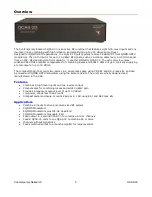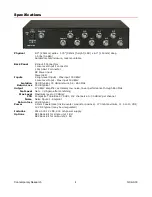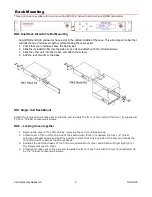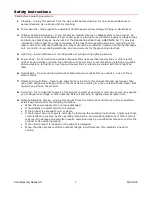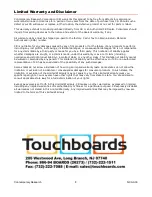
Contemporary Research
5
QCA9-33
Installation
Basic Setup
The QCA9-33 is designed for QMOD applications, but can be used with other RF channels at similar levels
Connect High-Level Sources to Inputs 1-8
Feed the RF outputs from up to 8 QMOD HDTV Modulators, normally set to output 29 dBmV.
Connect to the low-level RF Input 9
The ninth low-level (15-19 dBmV) port adds several options. The QCA9-33 will amplify the input by 15.5 dB:
Add an unplanned modulator – just set the QMOD to 17 dB.
Make room for an ICE-HE Control Modulator. The best practice is:
o
Move a QMOD to Input 9, set to 17 dB
o
Add the ICE-HD RF Out to a high-level output; insert a 20 dB attenuator to reduce the HE
output from about 52 dBmV to 32.
Combine a cable feed, usually filtered to knock out cable channels.
RF Amp Out
The QCA9-33 accepts up to 30 dBmV level, and after compensating for combining losses, amplifies the input
level by +3 dBmV – up to a maximum of +33 dBmV. This means the typical RF level from the QMOD 29
dBmV will be +32 dBmV.
The output level of the low-level input will be amplified by a net 13.5 dBmV. So a 17 dBmV input will be
amplified to 30.5 dBmV.
16-Channel Operation
Typically, connect the RF Out from 2 QCA9-33 combiners to a 2-1 splitter. This will provide 16-channel
operation, with a small loss of 3.5 dBmV.
16-64 Channel Operation
Feed the RF Out of up to 8 QCA9-33 to one QCA9-33. Set the QMOD HDTV Modulators to 25 dBmV. This will
provide a +28 dBmV RF level from each QCA9-33 combiners, resulting in a total +31 dBmV from the final
QCA9-33 combiner. Of course, and additional 8 QMODs could feed the low-level inputs, for a total of 72-73
channels.



